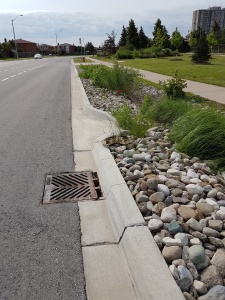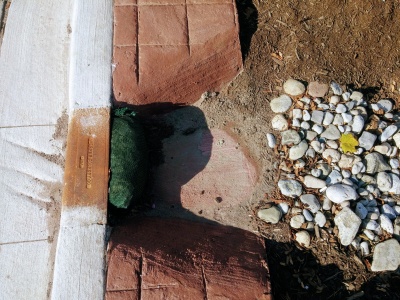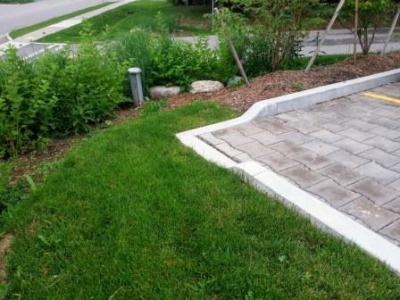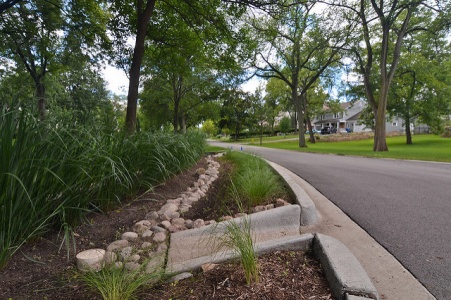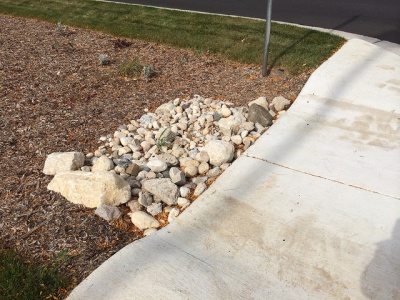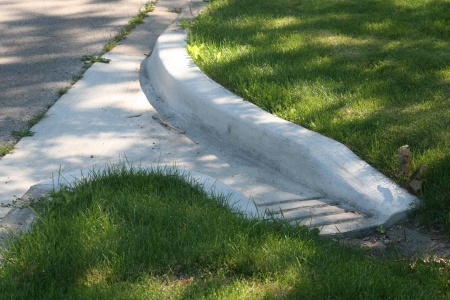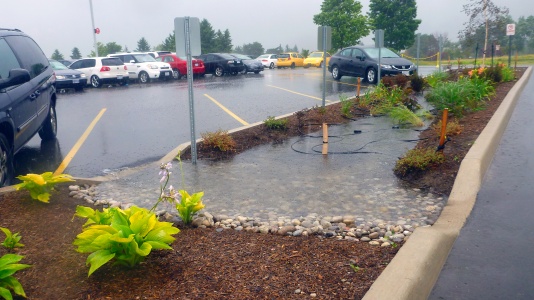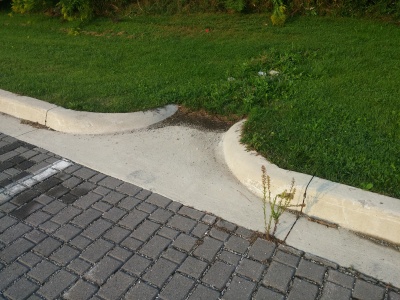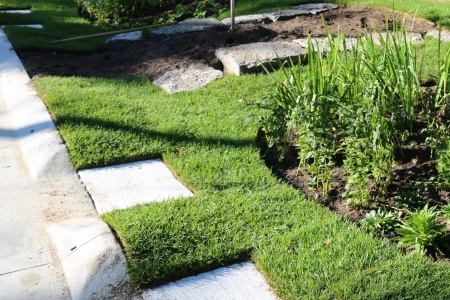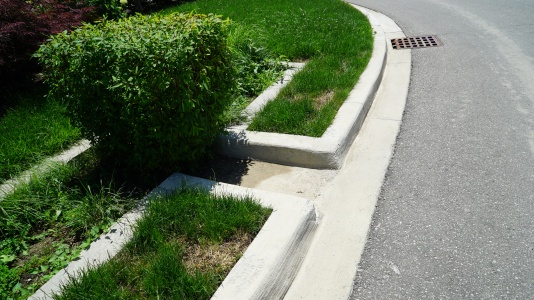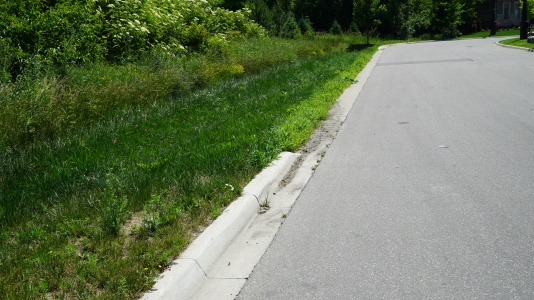Difference between revisions of "Inlets"
Jenny Hill (talk | contribs) m |
Jenny Hill (talk | contribs) m |
||
| Line 16: | Line 16: | ||
*Drains may be configured either perpendicular or parallel to the flow direction of the roadway, collecting runoff and directing to a single inlet in the BMP. | *Drains may be configured either perpendicular or parallel to the flow direction of the roadway, collecting runoff and directing to a single inlet in the BMP. | ||
| | | | ||
| − | *Inlet aprons or depressions increase inflow effectiveness | + | *Inlet aprons or depressions increase inflow effectiveness of [[curb cuts]]. |
| − | * | + | *Steeply angled aprons can be hazardous, especially to people bicycling. Curbside and protected bike lanes along concrete aprons should be at least 1.8 m to give cyclists adequate clear width from the curb and any pavement seams. Aprons can also be marked visually to indicate their perimeter. |
| + | *For aprons into [[bioretention]], the curb may angle into the cell to improve conveyance of gutter flow into the facility. Aprons typically drop 50 mm into the bioretention cell, with another 50 mm drop behind the curb to maintain inflow as debris collects. | ||
| + | *A depressed concrete apron can be cast in place or retrofitted in by grinding down the existing concrete pavement. | ||
*Where the curb alignment along the street is straight, the curb opening may optionally have a bar across the top of the inlet. | *Where the curb alignment along the street is straight, the curb opening may optionally have a bar across the top of the inlet. | ||
| − | |||
| − | |||
| | | | ||
*An inlet sump is recommended to settle and separate sediment from runoff where a large amount of debris is expected. | *An inlet sump is recommended to settle and separate sediment from runoff where a large amount of debris is expected. | ||
| − | *Water drains into a catch basin, where debris settles in its sump. After [[ | + | *Water drains into a catch basin, where debris settles in its sump. After [[pretreatment]], water drains via a pipe or opening into the BMP. |
*The sump can be directly connected to a perforated [[underdrain]] pipe to distribute the flow to the [[bioretention]] or connected [[extended tree pits|tree pits]]. | *The sump can be directly connected to a perforated [[underdrain]] pipe to distribute the flow to the [[bioretention]] or connected [[extended tree pits|tree pits]]. | ||
*Sump inlets should not be sited where pedestrians will have to negotiate with them. | *Sump inlets should not be sited where pedestrians will have to negotiate with them. | ||
Revision as of 19:25, 31 October 2017
Inlets for BMPs in the right of way should be located:
- At all sag points in the gutter grade
- Immediately upgrade of median breaks, crosswalks, and street intersections.
| Trench drains | Curb cuts | Inlet sumps | Depressed drains |
|---|---|---|---|
|
|
|
|
|
